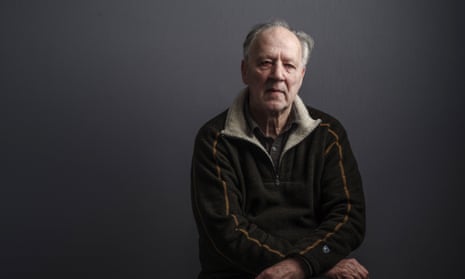Whenever a master of one artistic medium chooses to work in another, it raises the question of what the new discipline might offer, and what the previous one denied. The Twilight World isn’t Werner Herzog’s first book (nor his last – a memoir is awaiting translation), but it is his first attempt at what might loosely be called a novel. So: why not another film? What does the novel have to offer a man who, 60 years and 70 films deep into his career, can surely film whatever he wants?
Herzog’s preliminary disclaimer offers a clue. “Most details are factually correct,” he tells us, “some are not. What was important to the author was something other than accuracy, some essence he thought he glimpsed when he encountered the protagonist of this story.” It’s this essence, we assume, that Herzog felt his camera wouldn’t catch.
The Twilight World’s ostensible subject is a real person – Hiroo Onoda. If his name is unfamiliar, his story almost certainly isn’t. Stationed on the island of Lubang in the Philippines during the second world war, Onoda was ordered to defend the territory until the Imperial Army returned. Entrenched in the jungle, Onoda was cut off from all communications. When efforts were made to inform him of the war’s end – leaflets dropped, recorded messages played – he dismissed them as enemy propaganda. He remained on the island for 29 years, running guerrilla raids against local farmers, fighting a war that no longer existed.
Herzog finds his way into Onoda’s story via a documentary framing device. He is in Tokyo, in 1997, directing an opera. Asked who he would like to meet he can think of only one person: Onoda. From there he flashes back, rendering Onoda’s time in the jungle through a series of compact, vivid scenes.
At its best, Herzog’s writing bristles with the same eerie and uncompromising energy as his films. His jungle pulses with hallucinatory life. “The night coils in fever dreams,” he writes. “No sooner awake than with an awful shudder, the landscape reveals itself as a durable daytime version of the same nightmare, crackling and flickering like loosely connected neon tubes.” In one particularly vivid and beautiful phrase, Onoda’s hand trembles “like the skin of a horse trying to protect itself against flies”.
For Herzog, language is a bridge between the earthly and the cosmic. In his quest for the visionary, though, he sometimes oversaturates his sentences. Spiders are “like diabolical harpists plucking irresistible melodies from their strings”. The moon is “a heavenly body without any deeper meaning that has been around for millions of years before there were any humans”. In the context of the book’s narration these eccentricities – rendered with brio by translator Michael Hofmann – don’t feel like flaws. Instead, like the voiceovers Herzog provides for his documentaries, they lend the project an infectious, freewheeling swagger. But there is a cost. The more life Herzog gives the jungle, the more Onoda seems camouflaged by the foliage around him.
As his time on the island stretches into years, Onoda, we’re told, becomes “more stoical than ever”. When finally he accepts that the war has ended, he “seems without emotion, his inside is stone”. So fixed is Herzog in this impression that, just a page later, he repeats himself, telling us: “Onoda’s empty face betrays nothing, he seems turned to stone.” And yet Onoda himself, when he speaks, says: “There is a tempest raging inside me.”
That inner tempest speaks to Onoda’s essence. Herzog, though, is deaf to it. His own twice-used word – “seems” – is telling. Herzog is observing, not inhabiting. The extra interior dimension the novel form invites, and which in the right hands it excels at making visible, is closed to him. This may be merely a technical issue – perhaps, in picking up his pen, Herzog can’t entirely put down his camera. But given that Herzog is a white European man writing his way into Japanese culture, one does also wonder if a more profound failure of the imagination is to blame.
At the end of the novel, when Herzog finally returns to his framing device, he tells us that “Onoda and I straight away struck up a relationship. We found much common ground in our conversations because I had worked under difficult conditions in the jungle myself and could ask him questions that no one else asked him.” Why not give space to this encounter? Why not show us that common ground? The answer, I suspect, lies in the very terrain Herzog feels he and Onoda share: the jungle. This is where the true “essence” that captivates Herzog resides. He finds it not in Onoda, but through him. Of course we can’t see Onoda: Herzog has made him his lens.
